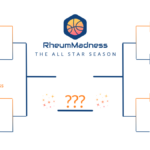The 1980s were also notable for the explosive pace of immunology research using newly developed technologies. Dr. Lloyd Old (who died in November 2011) and colleagues at Memorial Sloan-Kettering Cancer Center in New York City previously had demonstrated an endotoxin-induced serum factor that could cause tumor-cell necrosis. They named it tumor necrosis factor, or TNF. Others identified a homologous factor, termed “cachetin,” which was thought to be responsible for the wasting seen in hosts with certain cancers or infections.
Bruce Beutler, the 2011 co-winner of the Nobel Prize in Physiology or Medicine for his work in toll-like receptors, showed that passive immunization with rabbit antiserum or purified immunoglobulin raised against murine TNF–protected mice from the lethal effects of bacterial lipopolysaccharide. Simply stated, these investigators believed they had discovered a potential therapy to protect the host against septic shock.
A small start-up biotechnology firm invested heavily in the development of a therapeutic monoclonal antibody to bacterial lipopolysaccharide, provisionally named “centoxin,” intended for the treatment of sepsis. Jan Vilcek, MD, working at NYU Langone Medical Center in New York City, had recently recruited to his lab a talented postdoctoral scientist, Junming Le, whose expertise lay in the newly developed science of monoclonal antibody technology. (Georges Kohler and Cesar Milstein had recently been awarded the Nobel Prize in 1984 for their work in developing this technology.) One of the antibodies, A2, not only bound to TNF with high affinity and selectivity, but also showed a potent neutralizing activity against TNF, which suggested that it might have therapeutic potential.
As mouse antibodies were known to be unsuitable for long-term therapeutic application, the company developed a chimeric antibody, cA2, by joining the variable region of the original mouse antibody A2 with human immunoglobulin G1 sequences. However, clinical trials proved to be a disaster. The antibody had no benefit in treating sepsis. In 1992, the U.S. Food and Drug Administration (FDA) denied approval for centoxin, plunging the start-up company, Centocor, into a financial crisis.
Fortunately, Drs. Marc Feldmann and Ravinder Maini at the Kennedy Institute of Rheumatology in London persuaded Centocor to provide them with enough cA2 to conduct a small open clinical trial in patients with RA. The results of this study were dramatic, showing both considerable relief of the severity of clinical symptoms and substantial decrease in inflammatory markers in the blood. Thus, cA2 became the first TNF-blocking agent to be successfully used in humans. Six years of clinical trials ensued before the FDA approved cA2 (by then re-baptized infliximab, or Remicade) for RA and Crohn’s disease.

